Affiliate disclosure: This post may contain affiliate links. Please see our Privacy Policy.
Oregano tincture is a powerful remedy for fighting bacteria and fungi, healing wounds, reducing inflammation, and supporting the immune system. Herbalists rely on it to treat gastrointestinal disorders, colds, flu, and respiratory disorders. Oregano tincture has also traditionally been used to treat or prevent diabetes. Its antifungal and antibacterial properties also help treat external issues like acne, skin infections, and fungal infections.
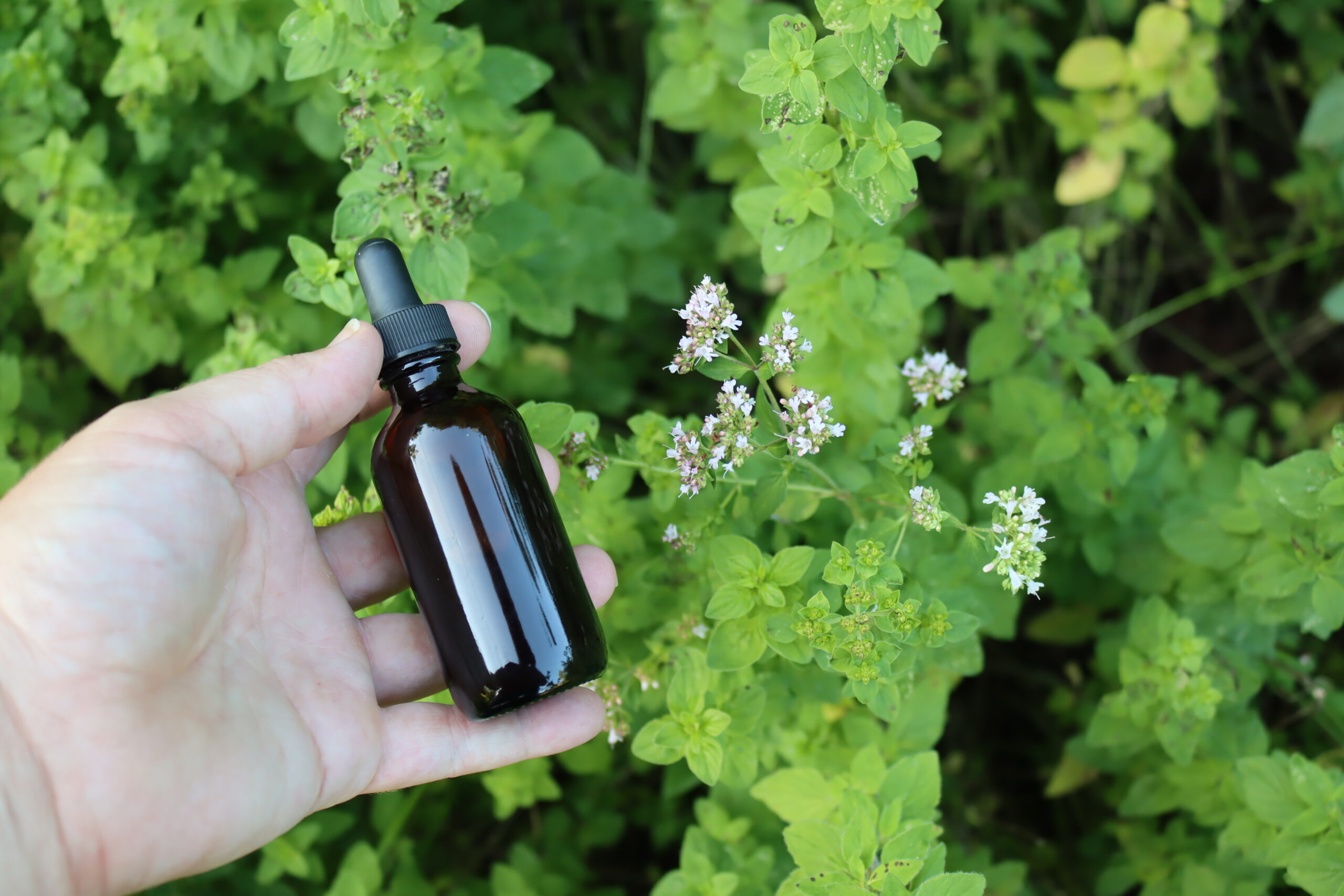
Oregano is often considered a culinary herb, but it has also been an important herb in folk medicine for centuries. It’s a great herb to do battle against bacteria and fungus both internally and externally.
Today, oregano oil remains a popular herbal remedy, but not everyone tolerates it. Oregano tincture is also an excellent option for those folks. It’s easy to add to a glass of water, tea, or juice.
However, it may have some side effects. Don’t take oregano tincture if you’re taking lithium, blood thinners, or diabetes medication. It may slow blood clotting or cause blood sugar to go too low.
Oregano is also easy to grow, so you can make your own fresh tinctures and other herbal remedies. You can grow oregano from seed or divisions and plant them out in the spring after the danger of frost has passed. It’s a hardy perennial in hardiness zone 4 through 10 and will last for years to come.
Oregano thrives in full sun but will do okay in partial shade in hot climates. Amending your soil with finished compost will help ensure good growth. Be sure to leave plenty of room; oregano plants grow deceptively large, reaching one to two feet tall and about 18 inches wide.
It’s also great for apartment homesteaders or folks short on space. Oregano tolerates being grown in a container, so you can grow it indoors or on a balcony or patio if you don’t have garden space available.
Regular harvesting is great for oregano, so you can use plenty once the plant is established. Trimming the tops of the stems will encourage the plant to grow bushier rather than tall and leggy and gives you plenty to use for your culinary and medicinal creations!
Oregano Tincture Uses
Herbalists use oregano tinctures both topically and internally to treat various ailments.
Topically, oregano tincture is used to:
- Treat skin irritations
- Heal minor wounds
- Fight skin infections
- Treat insect bites and stings
Internally, oregano tincture is used to:
- Treat respiratory ailments
- Boost the immune system
- Treat gastrointestinal disorders
- Fight infections
Additionally, the herb is currently being investigated for its potential:
- Lower cholesterol
- Diabetes Treatment
- Fight cancer
A few studies have demonstrated oregano’s use for these ailments, but further study is needed to verify their significance.
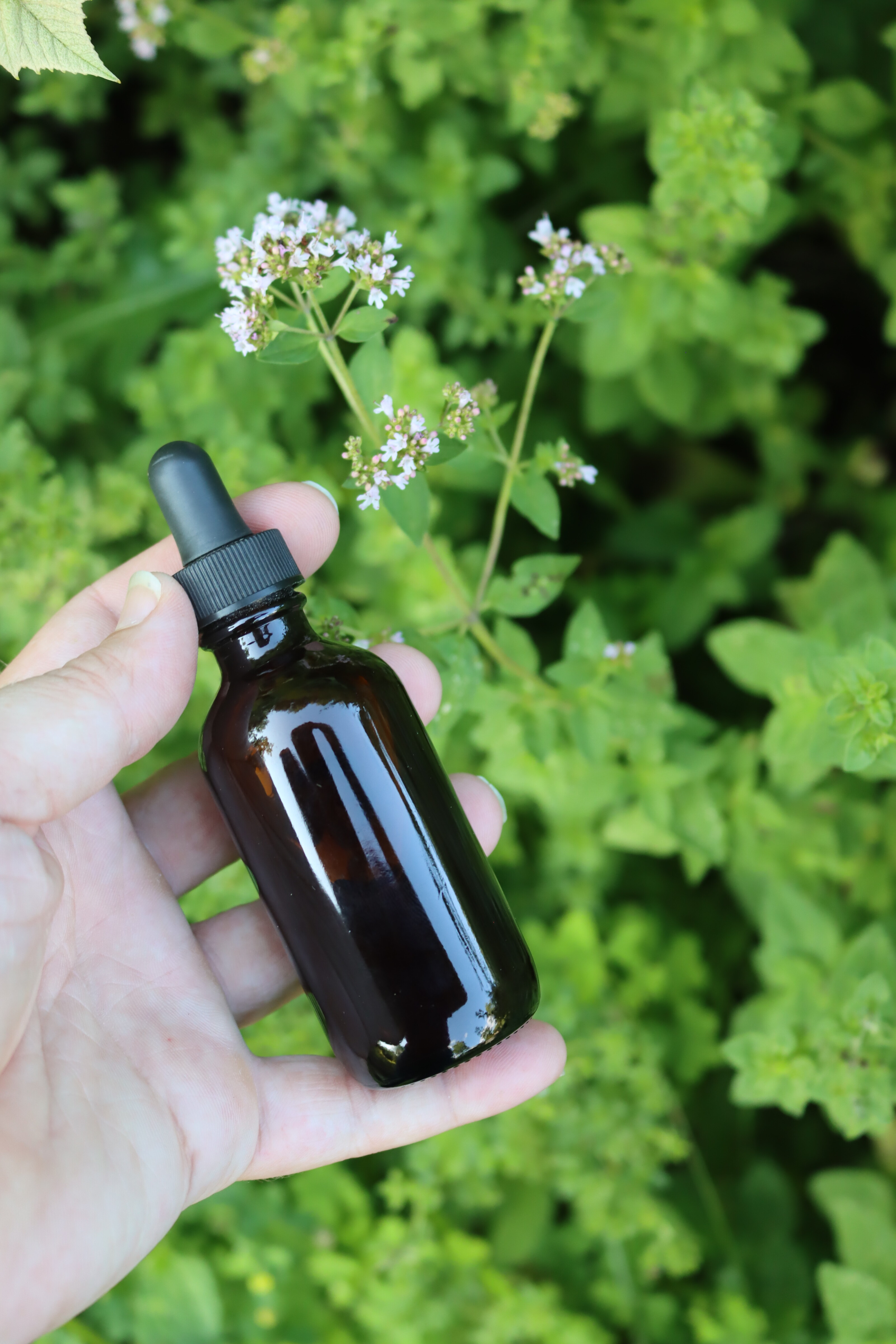
Benefits of Oregano Tincture
Oregano has been an important herbal remedy for hundreds of years. The ancient Egyptians realized the significance of oregano’s antibacterial and antifungal properties and used it as a food preservative. Along with the Ancient Greeks, they also used it to treat poison. The ancient Greeks also used oregano to treat skin irritation, infections, convulsions, and heart failure.
Today, herbalists still primarily use oregano tincture for its antibacterial, antifungal, and anti-inflammatory properties. However, it’s also full of vitamins and antioxidants, making it good for general health and immunity. One study found that out of 39 commonly used herbs, oregano had the highest concentration of antioxidants.
Internally, oregano’s antibacterial effects have made it a top choice for treating infections. One 2002 study found that oregano had a similar impact on E. coli bacteria as a standard antibiotic called polymyxin B. Both the oregano and the antibiotic work by disrupting the bacteria’s outer cell membrane. Further, another study found oregano oil was active against E. Coli and Pseudomonas aeruginosa, a type of bacteria that can cause lung infections, especially in immune-compromised patients.
One Georgetown University researcher found that oregano was particularly helpful in treating antibiotic-resistant bacteria, a growing problem in today’s world. The researcher gave oregano oil or olive oil to mice that had been infected with staph bacteria. All of the mice that received just olive oil died within three days, but 50% of the mice that were given oregano oil survived at least 30 days.
Oregano is also a common herb choice for external infections and skin irritations. One study examined the effects of oregano on a few specific acne-causing bacteria. Surprisingly, they found that oregano showed better healing and antimicrobial effects than antibiotics.
Oregano tincture can also be used to treat different types of fungal growth, particularly thrush, athlete’s foot, nail infections, and yeast infections. Unlike some fungal treatments, these growths don’t build up a tolerance to oregano over time, making them a better choice for long-term management of the condition.
Oregano extract can be used to maintain oral health and prevent periodontal disease. To make a simple but effective antibacterial mouthwash, whisk a few drops of oregano tincture into a cup of warm water with a pinch of salt.
In traditional medicine oregano was used to treat diabetes where modern treatments weren’t available. Today, researchers are currently looking into oregano as a potential source for antidiabetic medication as it is known to lower blood sugar.
Researchers are also experimenting with using oregano to prevent and treat cancer. Studies have found that carvacrol, a compound found in oregano, may inhibit lung cancer, breast cancer, and colon cancer cells.
This same compound, carvacrol, may also be involved in oregano’s traditional use as an herb for gastrointestinal issues. When combined with other herbs, researchers found that oregano worked as well at treating bacterial overgrowth in the small intestine as Rifaximin, a common antibiotic for treating Irritable Bowel Syndrome.
Oregano tincture doses vary based on the person and specific needs. Generally, herbalists recommend 1 to 2 droppers full up to 3 times daily.
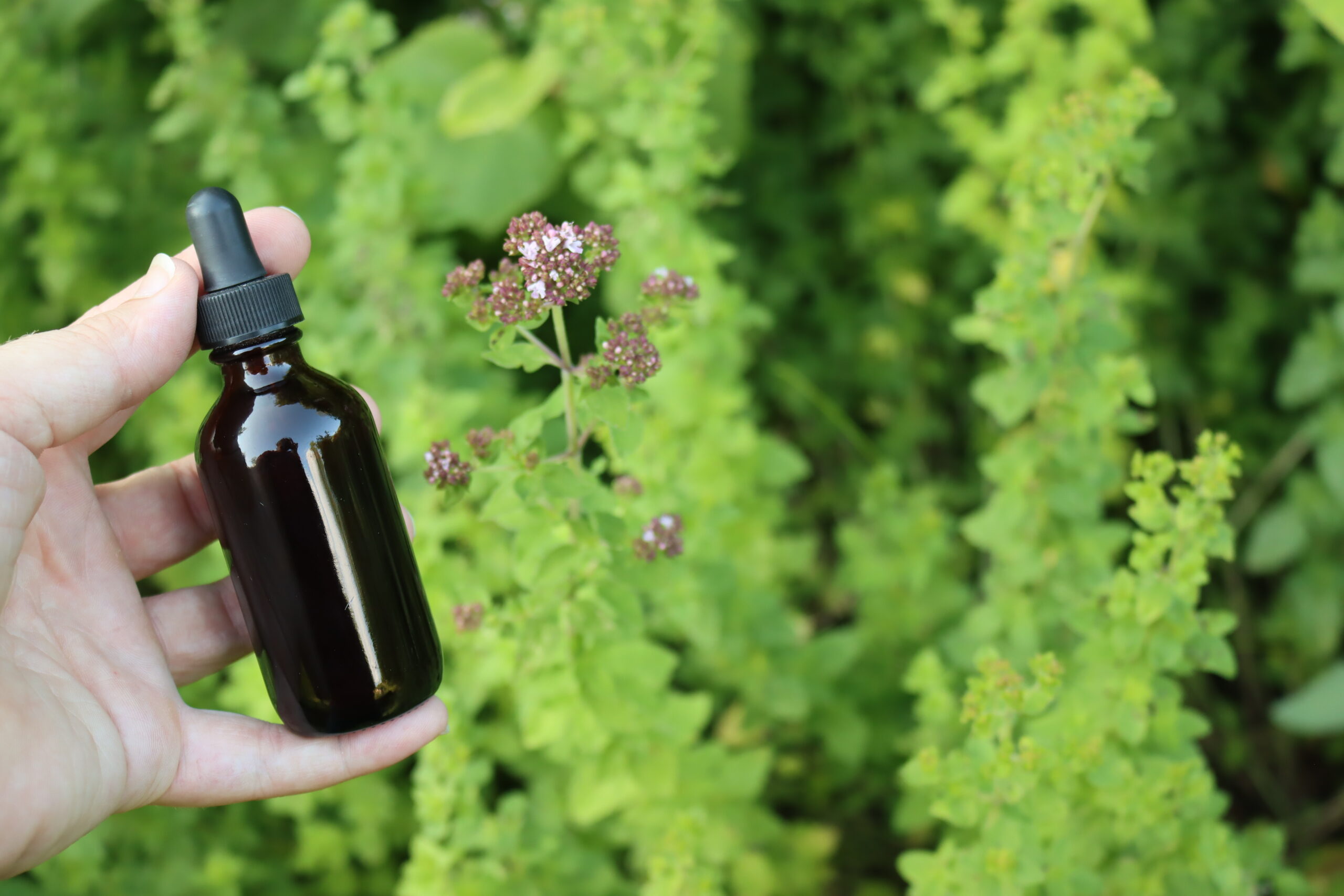
Parts Used for Tincture
There’s little waste when making an oregano tincture. Harvest some of your oregano by trimming some stems off. You can use the leaves, stems, and flowers in your tincture.
Rather than just stuffing these into the jar, it’s best to chop them up a bit. This provides more surface area for the alcohol to soak into the oregano.
You can also purchase dried oregano for your tincture if you don’t grow oregano. It’s among the few medicinal herbs commonly found on the grocery store shelf. You can also order oregano online. Mountain Rose Herbs is one of our favorite herbal suppliers.
How to Make Oregano Tincture
To make an oregano tincture, you’ll need the following ingredients and equipment:
- Fresh or dried oregano leaves, stems, and flowers
- Vodka* (or any other palatable alcohol, rum, gin, and whiskey are also common choices)
- One-pint mason jar with lid (amber glass is ideal, but as long as you keep the tincture away from light at all times, it won’t make a difference)
- Funnel
- Cheesecloth
- Fine mesh sieve
- Amber glass tincture bottles (with dropper)
*The Herbal Academy’s tincture-making course recommends using 70% to 95% alcohol when working with fresh oregano or 45% alcohol when working with dried oregano.
**Never use isopropyl/rubbing alcohol for tinctures (or any other remedy you plan on ingesting). Even in small amounts, this type of alcohol is toxic and meant for external applications only.
To make the tincture, fill a jar about ⅔ full with fresh oregano or about ½ full with dried oregano.
Cover the oregano with vodka or whichever alcohol you’ve chosen, and seal the jar with its lid. Make sure the lid is airtight so the alcohol doesn’t evaporate.
Place your jar somewhere cool and dark, like a kitchen cabinet, but don’t hide it away where you will forget it. You need to shake your tincture regularly. It’s best to shake your tincture once a day gently, but tinctures are forgiving, and every couple of days will work, too.
If your alcohol drops below the oregano, you should top it off to ensure all the oregano is submerged.
Keep this up for about 4 to 6 weeks, and your tincture will be ready for decanting!
To do this, line a funnel with cheesecloth. Carefully strain the tincture, then squeeze your oregano in the cheesecloth to ensure all the liquid is expelled.
At this stage, you can bottle your tincture or let it settle overnight and use a finer filter or sieve to remove any additional material. This may be especially helpful if you used dried oregano that had a lot of fine particles or dust. It may not be necessary for the larger pieces of fresh oregano.
Once you’re happy with your tincture, pour it into small amber glass tincture bottles.
Remember to label the tincture bottles with the name, date, and suggested dosages (I use a small piece of masking tape and a marker; it peels off easily when I’m ready to use the bottle for something else). It’s easier to lose track of your tinctures than you’d think!
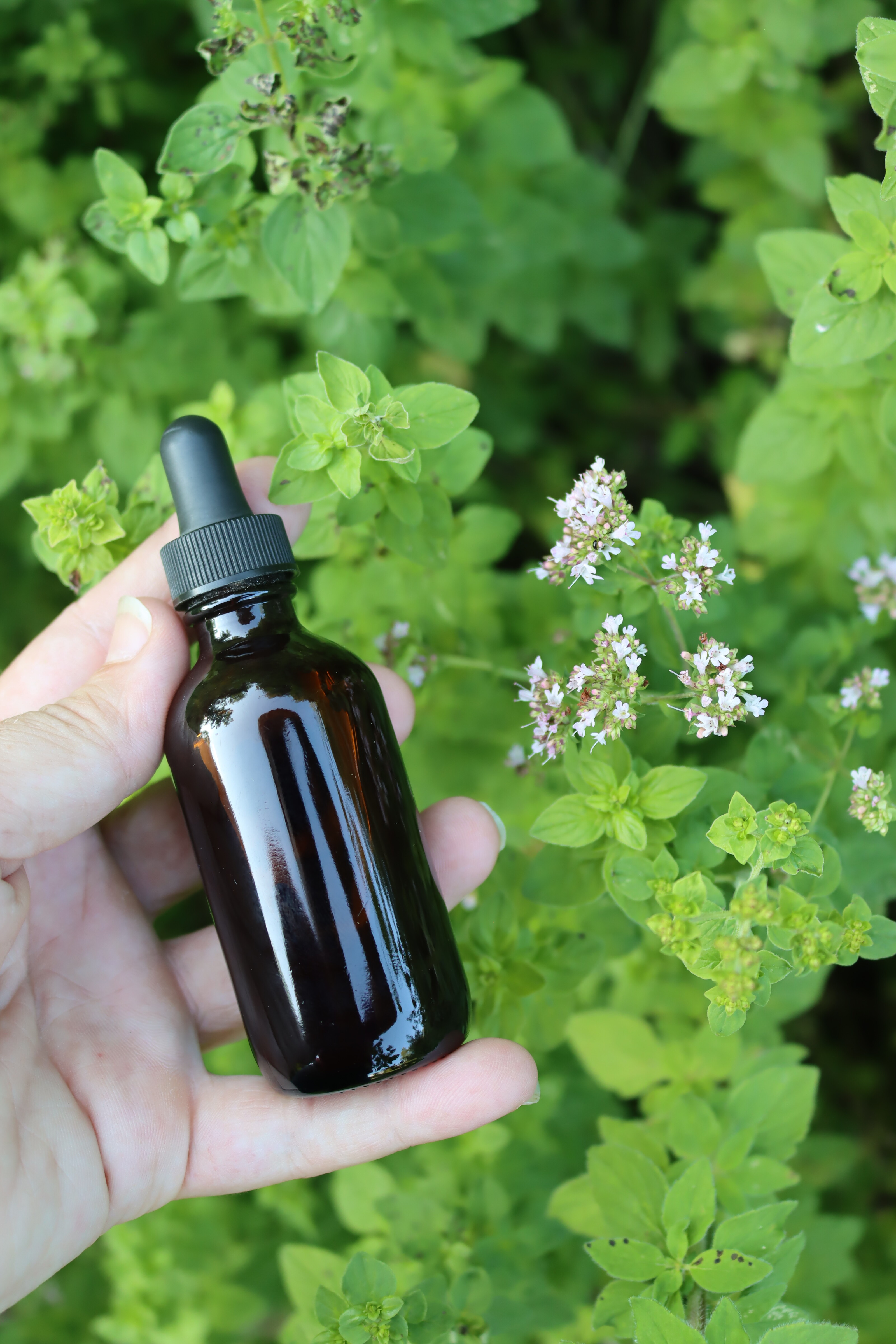
Oregano Tincture Dosage
I’d suggest consulting a clinical herbalist for an exact dosage specific to your body and needs.
Generally, the dosage for oregano tincture is 1 to 2 droppers full (1 to 2ml), one to three times per day. Once per day may be enough for general wellness, but up to three times per day may be better for fighting acute infections.
Oregano Formulations
When used for skin health and to soothe irritations, Oregano tincture pairs well with other herbs for the skin, like calendula tincture or turmeric tincture. To help fight infections and respiratory ailments, try using your oregano tincture with other immune-boosting remedies like elderberry tincture or echinacea tincture. For those who suffer from gastrointestinal issues, pairing oregano tincture with a soothing tincture like chamomile may help reduce discomfort.
Tincture Recipes
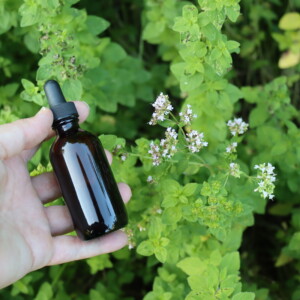
Oregano Tincture
Equipment
Ingredients
- Oregano Fresh or Dried
- Neutral Spirit such as vodka*
Instructions
- Start by filling a clean mason jar about halfway (1/2) with dried oregano. Fresh oregano can be used as well, but dried herbs are typically more concentrated and easier to work with for tinctures. If using fresh oregano, pack the jar more loosely to allow room for expansion.
- Pour your choice of alcohol over the oregano, ensuring that the plant material is fully submerged. Common options include vodka, brandy, or rum, but any high-proof alcohol (at least 60 proof) will work. Alcohol extracts the active compounds from the oregano efficiently.
- Once the jar is filled, screw the lid on tightly and shake the jar gently to combine the alcohol and oregano. Place the jar in a cool, dark spot, out of direct sunlight, to begin the extraction process. Let it sit for 6 to 8 weeks.
- Shake the jar every 2-3 days to help the extraction process and ensure that the oregano stays evenly soaked. Keep an eye on the alcohol level during this time and top it off with more alcohol if the herbs are no longer fully covered.
- After the 6 to 8 weeks have passed, it’s time to strain the tincture. Place a cheesecloth or fine strainer over a funnel and pour the tincture into a dark glass bottle, pressing down on the oregano to extract all the liquid.
- Once the tincture has been strained, transfer it to a dark glass bottle and label it with the name of the herb, the date it was made, the dosage instructions, and any other relevant details. Store the tincture in a cool, dry place, out of direct sunlight.
Notes
Alcohol Selection
Vodka is commonly used because of its neutral flavor, but you can also use other alcohols like brandy or rum for a more complex flavor profile. Just make sure the alcohol content is at least 60 proof (30% alcohol) for optimal preservation and extraction. Never use denatured alcohol or isopropyl alcohol in tinctures, as these are toxic and unsuitable for consumption.Yield
The final yield will depend on whether you're using fresh or dried oregano. If you're using dried herbs, expect to lose some alcohol to absorption by the plant material. For a quart-sized jar, you'll typically need 2 to 3 cups of alcohol, or around 1 to 1.5 cups for a pint-sized jar. Make sure that the oregano stays fully submerged to avoid mold and ensure a clean tincture.Alcohol-Free Glycerite Option
If you prefer to avoid alcohol, you can make an alcohol-free glycerite tincture. To do so, cover the dried oregano with a mixture of 3 parts vegetable glycerin to 1 part distilled water. If using fresh oregano, you can skip the water and just use glycerin. As the glycerite develops, shake it daily to help with the extraction, and follow the same process as you would with an alcohol tincture.Caution Regarding Homemade Herbal Remedies
I’ve been foraging wild medicines and treating my family with herbal remedies for the past 20 years, but I’m self-taught. Be aware that I am not a clinical herbalist, and this is based on my own research and personal experience using medicinal plants. I do not claim to have the experience that’d qualify me to advise you on your health, and I’m only providing this as a reference to encourage a broader interest in medicinal plants.
Please use this as a jumping-off point, but always do your own research and verify anything you read with multiple sources.
It’s always possible to have an adverse reaction to any medicinal herb, and plenty of people are allergic to even gentle herbs like chamomile. Always consult your doctor or a certified herbalist before trying any new medicinal plant. Often, they can have unintended reactions in combination with other herbs and supplements, and many herbs have side effects even when they are effective for their intended purpose.
If you are seriously interested in herbal medicine, I’d suggest investing in a course in herbal medicine, and I’d recommend any of the online courses put out by the Herbal Academy of New England. Specifically, the introduction to herbal medicine course and the family herbalist group of courses.
They also have a mushroom course, covering both medicinal and edible mushrooms, and a Botany and Wildcrafting Course. I’ve taken both and they’re informative, inspiring, and artfully presented.
Herbal Tinctures
Interested in making other homemade herbal tinctures?
Herbal Medicine Making
Herbal medicines don’t stop at tinctures! Learn how to make more homemade medicine…
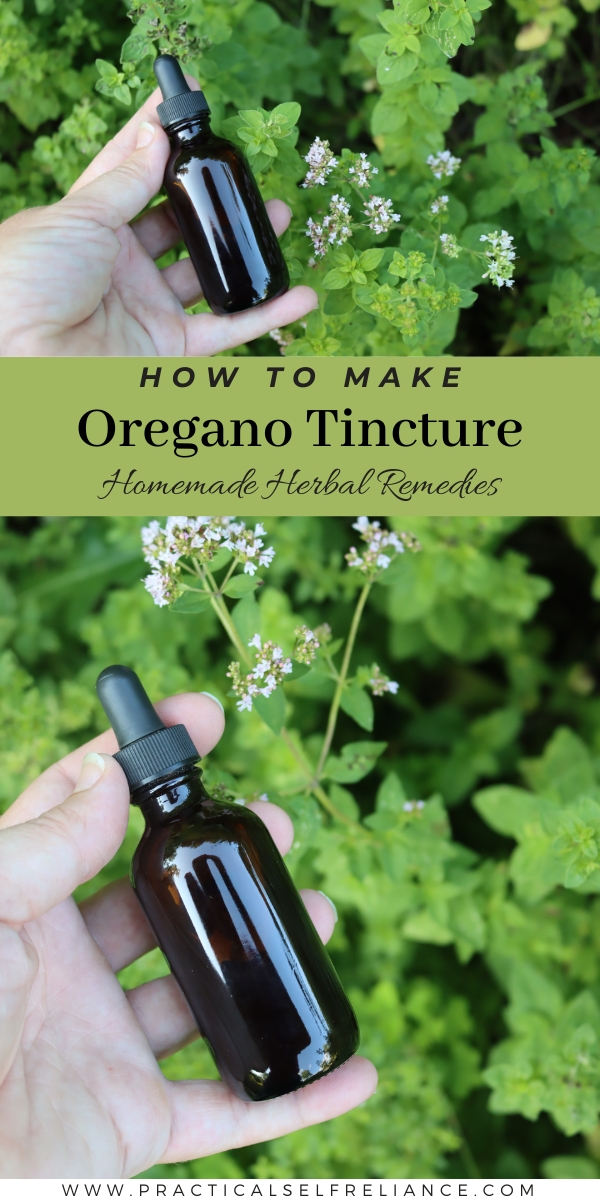
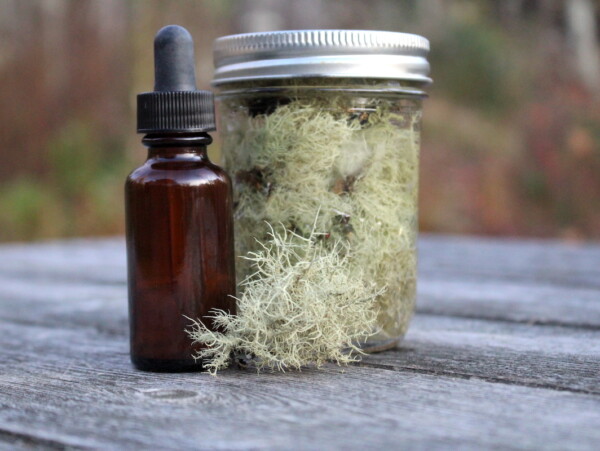
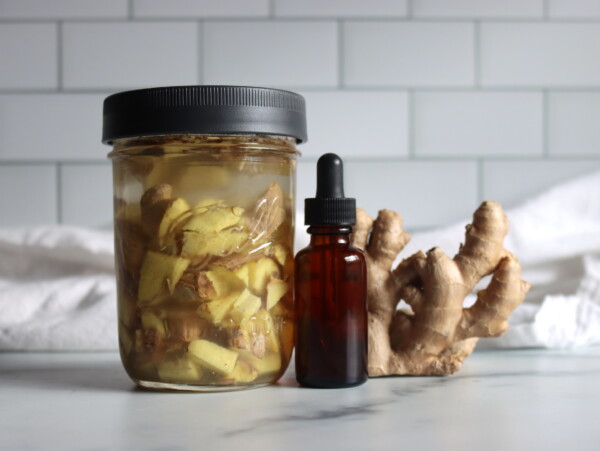
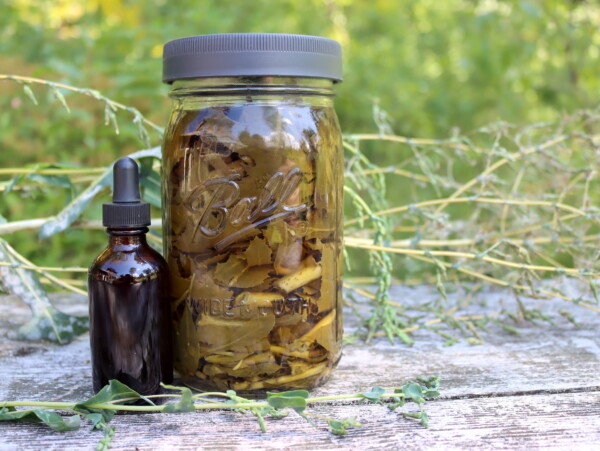
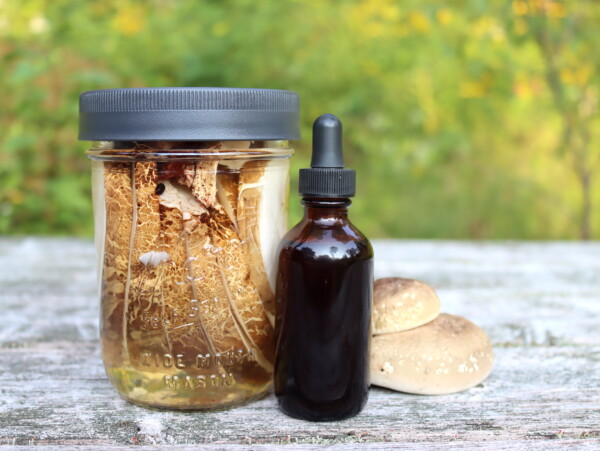
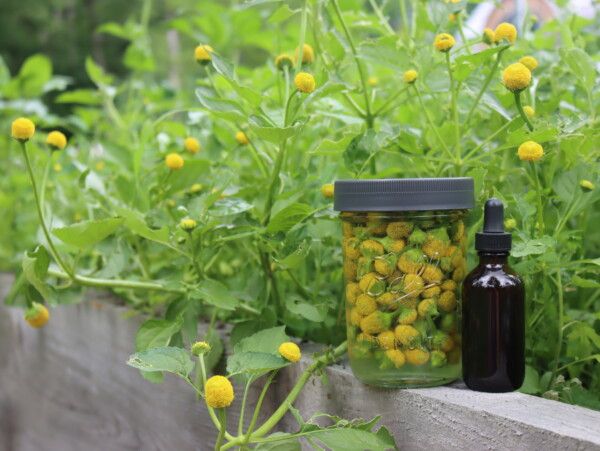
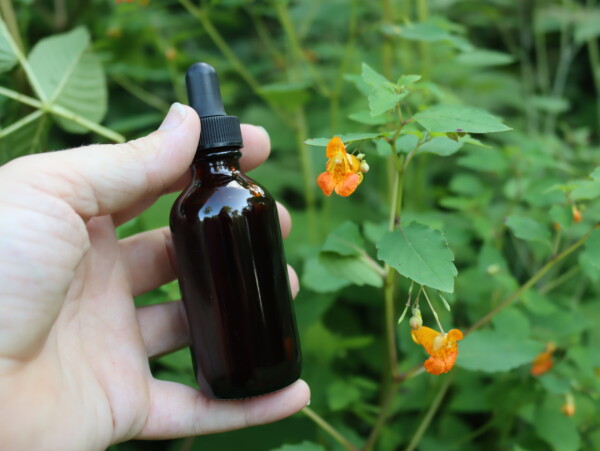
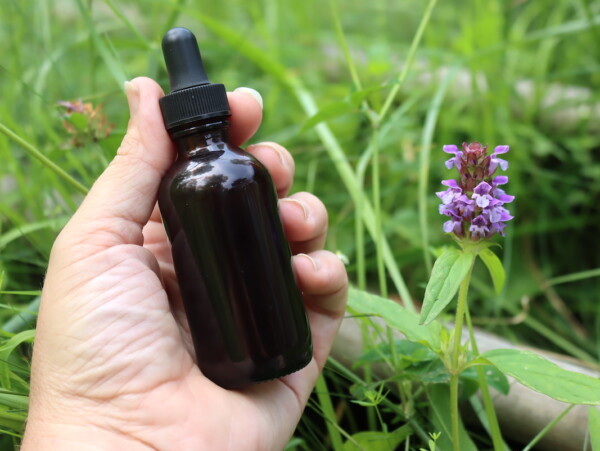










So easy to make and so effective!
If you wanted to treat a nail fungus, would you use this orally or externally? I wasn’t sure if this could be used interchangeably over skin issues and or orally as a tincture.
I’m not a clinical herbalist, so I can’t give you any specific recommendations here, but if I were using it to treat nail fungus on myself, I’d use it topically as a soak.
While steeping tinctures in vodka, would it be beneficial to vacuum seal the jars?
That’s a good question, and I don’t really have a definitive answer here. Possibly? I’m not sure anyone has really put work into testing this.
What happens if I left the bottle in the shelf for 3 months? Is it still usable?
Yes it should be just fine.
Dropper bottles come in various sizes. What is the measurement of the dropper you are recommending?
A 1 oz. dropper bottle tends to be the standard. It is my understanding that even larger dropper bottles tend to be fairly equivalent in the dropper dosage even though the bottles themselves are larger. It would be something fun to experiment with though to see how different they are.
Where do you find vodka at higher than 40% alcohol? I went to the liquor store and every vodka was 40% or less. I’m still going ahead with it but I’d like to do it right!!!
If you’re working with dried herbs 40% is perfectly fine and what is used by most herbalists. If you’re working with fresh plant material, I typically use a pure grain alcohol such as Everclear.